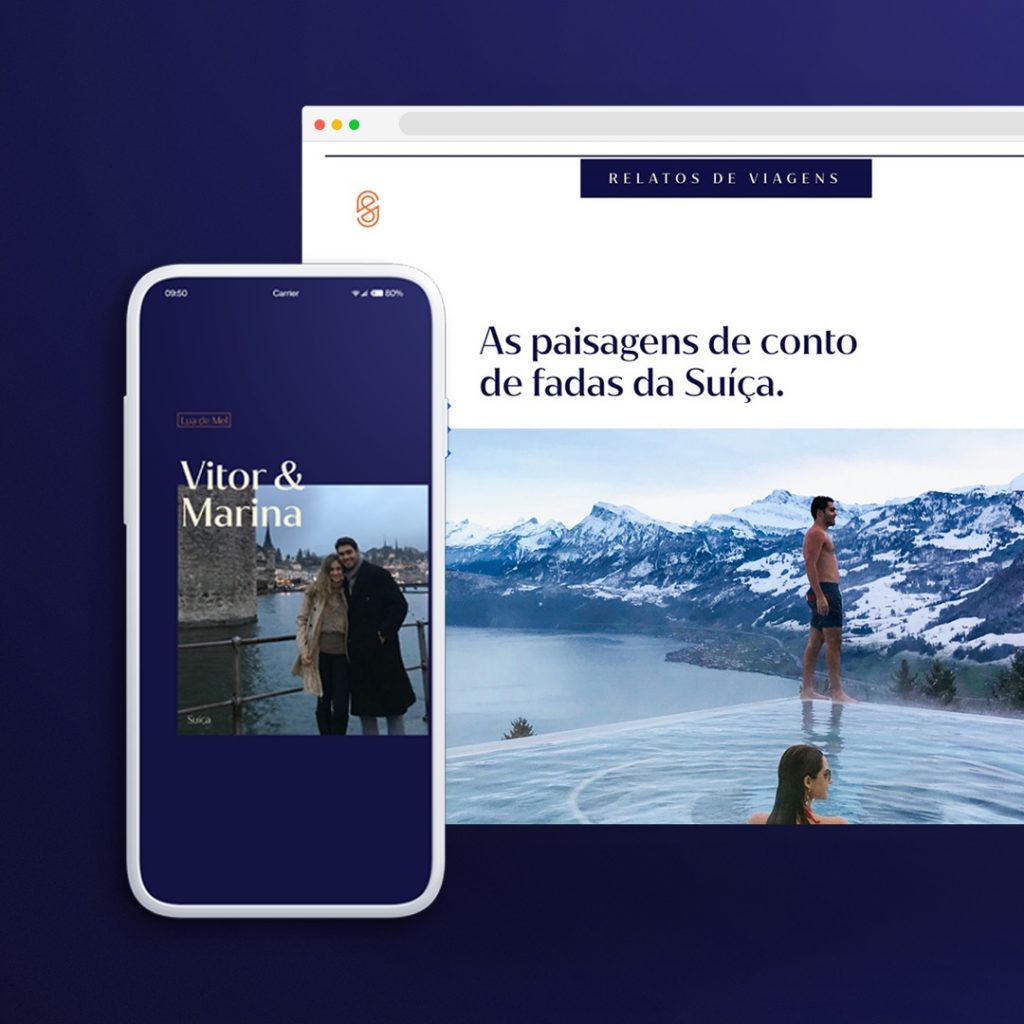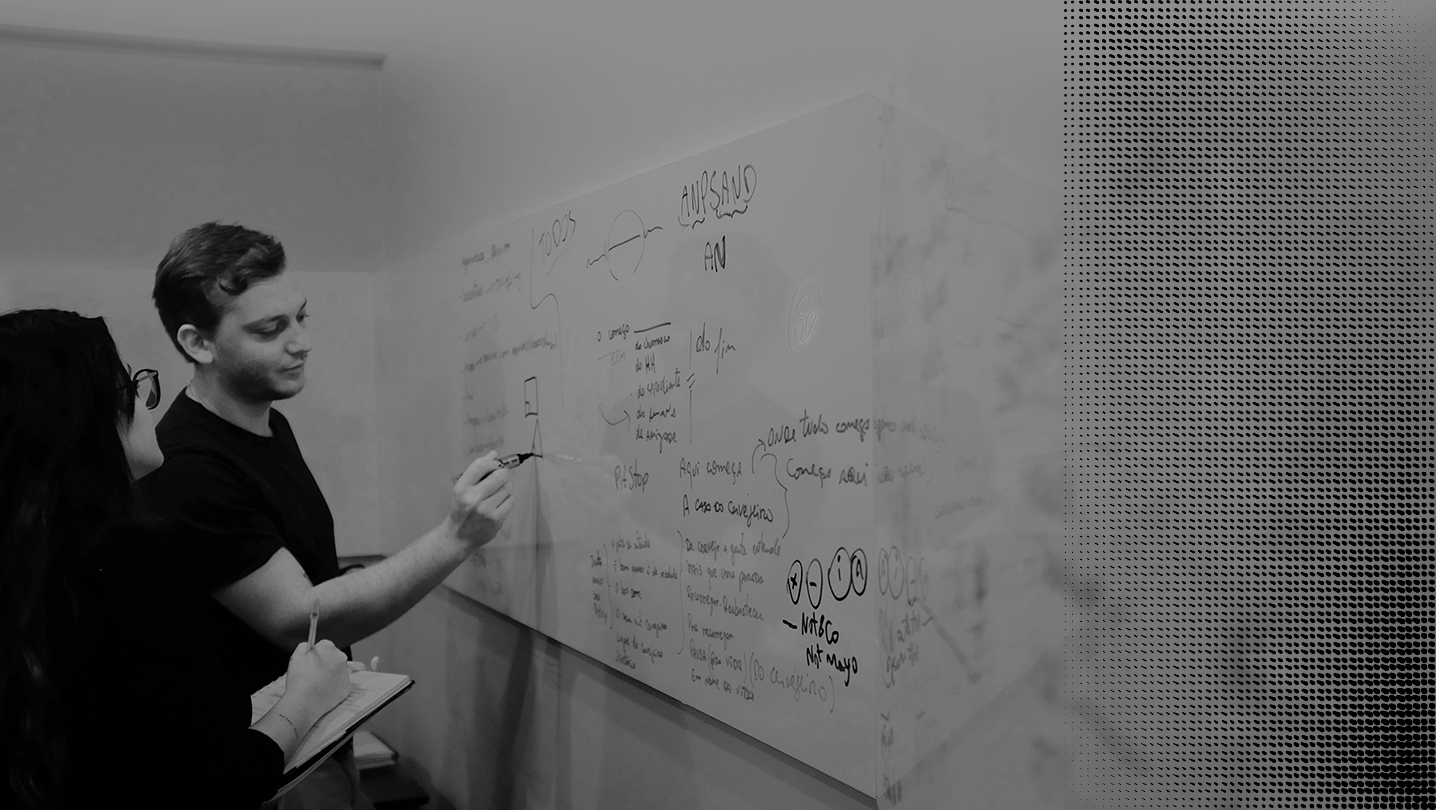Choose an object. Any object. Fix your gaze intently on it and notice that everything around you begins to blur. This phenomenon is analogous to what happens to many entrepreneurs, who, being completely immersed in their day-to-day business, find it difficult to see what is going on around them.
In our Brand InnovationWe understand the importance of a macro view in order to see trends. Trends are like waves in the sea; those who manage to catch them acquire momentum. The wave, therefore, becomes a competitive advantage among all the other swimmers on the shore, who aim for the beach, but who have not been able to predict the movement of the water.
For this reason, in this article, we have listed three categories that are important for making an efficient reading of the market, in any type of strategic analysis. These are: 1) competitors; 2) consumer behavior; 3) technological innovation.
1) Analyze Your Competitors
One of the basic principles of strategy is to analyze your competitors. As much as you may say "I don't have any competitors", believe me, you do. First you need to gain an in-depth understanding of each competitor's strategy and identify their main strengths and weaknesses. Then compare them with your own company. From there, you'll be able to define clear actions focused on elements that, preferably, exploit your greatest advantages to the detriment of your competitors' weaknesses. In short, analyze the scenario, identify your advantages, focus your resources and actions on them and attack your competitors' weaknesses.
An interesting case is that of Intel, commented on by Richard Rumelt in "Good Strategy Bad Strategy". In 1984, Intel was famous for its memory (DRAM) and its chips. As a result, Intel was losing money because it could no longer beat the price of DRAMs manufactured in Japan.
THE CEO Andy Grove, saw the DRAM war as a losing battle. After a year of indecision, he courageously made a 180-degree turn. He ended the production of memory (at the time the company's flagship) and focused on the production of microprocessors, which the CEO believed to be his great differentiator. Consequently, the success of the 32-bit 386 chips was the wave that carried Intel to become the world's largest semiconductor company in 1992.
2) Consumer Behavior
The contemporary world is constantly changing. For example, generations X, Millennium, Z and Alpha each have a different way of dressing, living, relating to brands, consuming food and even different styles of humor. In this way, understanding and monitoring changes in behavior is vital to surviving in the market.
This is all the more necessary in a post-pandemic world that has been forced to transform radically in a short space of time. As a result, consumers have also rethought their habits and followed the compulsory changes of this new reality.
Sensations is a company that has understood this need and has been able to reinvent itself at a crucial time. Just to illustrate, in the midst of the pandemic, the renowned luxury travel agency discovered a way to talk about tourism without having to travel. As well as seeing an opportunity to reinforce its positioning, based on experience, from the first moment of the crisis it made itself available to its clients and strengthened the relationship with each one of them.

One of the main actions developed by the agency, for example, was the creation of a series of travel stories on Instagram. Clients and partners shared their experiences, sensations and tips about the places they visited. The result was surprising and clients who were unable to travel during this period felt assisted, directly influencing a positive experience.
3) Technological innovation
Finally, there is technological innovation. Those who invent a unique feature, or a unique operating model, have a great competitive advantage because these elements are extremely difficult to copy. This is one of the rarest types of differentiator found on the market. However, being agile enough to adopt emerging technologies in an outdated segment can also be a great opportunity.
A good example is I signed. After observing how bureaucratic and slow business in agribusiness was, due in large part to the colossal mountains of paper and signatures between those involved, it decided to innovate in the segment and simplify. In order to find a solution, the Siagri group company developed a digital contract signing and management platform that maximizes time and reduces costs, without losing the security of face-to-face negotiations, using blockchain technology.
Conclusion
The big mistake most companies make is believing that their main objective is to reach the 'top' and conquer the comfort zone, that place where there are no worries or threats. However, this thinking only hinders movement. Undeniably, great innovations emerge day after day and those who insist on turning a blind eye to this may not be able to achieve the success they desire and may become stagnant, or even lose their place in this gigantic market.
In short, efficient market readings can prepare your company for times of turbulence and prevent market impacts from not reaching you or having their impact cushioned.
"In a world where changes are occurring rapidly, the only strategy guaranteed to fail is not to take risks." - Mark Zuckerberg
From ego to empathy
As a young designer you may have heard this phrase a lot. But what does it mean? As someone who is pretty empathetic and self-critical, I never felt like it applied to me. But in retrospect, I think that's because most people use "ego" to describe inflated self-importance, when it's really just a word that describes how we understand our personal identity.
The distinction is important because letting go of your ego can be a nuanced practice in empathy. It's not just advice for arrogant jerks, it's essential for anyone working professionally. As a designer, my thoughts, tastes and keystrokes obviously are part of the equation, but it took some time to figure out that I could not create work in a silo as a reflection of my "aesthetic."
To some of you this might sound like a bummer, but when you take on a client's challenges and their point of view, you will have to think differently. You will find new approaches and you will grow. But more on that later.
"As a young designer you may have heard this phrase a lot. But what does it mean? As someone who is pretty empathetic and self-critical, I never felt like it applied to me."
Ernst Neufert in "The art of architectural design".

OK, but what does this have to do with my brand?
As a young designer you may have heard this phrase a lot. But what does it mean? As someone who is pretty empathetic and self-critical, I never felt like it applied to me. But in retrospect, I think that's because most people use "ego" to describe inflated self-importance, when it's really just a word that describes how we understand our personal identity.

As a young designer you may have heard this phrase a lot. But what does it mean? As someone who is pretty empathetic and self-critical, I never felt like it applied to me. But in retrospect, I think that's because most people use "ego" to describe inflated self-importance, when it's really just a word that describes how we understand our personal identity.
From ego to empathy

As a young designer you may have heard this phrase a lot. But what does it mean? As someone who is pretty empathetic and self-critical, I never felt like it applied to me. But in retrospect, I think that's because most people use "ego" to describe inflated self-importance, when it's really just a word that describes how we understand our personal identity.
The distinction is important because letting go of your ego can be a nuanced practice in empathy. It's not just advice for arrogant jerks, it's essential for anyone working professionally. As a designer, my thoughts, tastes and keystrokes obviously are part of the equation, but it took some time to figure out that I could not create work in a silo as a reflection of my "aesthetic."
Famous last words
As a young designer you may have heard this phrase a lot. But what does it mean? As someone who is pretty empathetic and self-critical, I never felt like it applied to me. But in retrospect, I think that's because most people use "ego" to describe inflated self-importance, when it's really just a word that describes how we understand our personal identity.
Hope this answers some of your questions, Dmitro.
- Author's name
